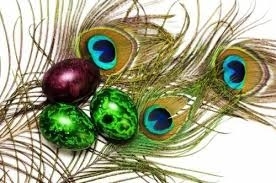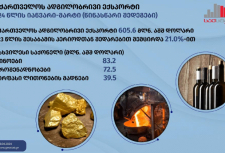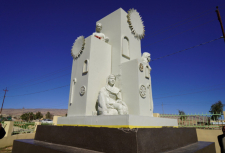Charshama Sor Holiday

Hat çarşema sore,
Nîsan xemilandibû bi xore,
Ji batin da ye bi more.
Hat çarşema sor û zere,
Bihar xemilandibû ji kesk û sor û sipî û zere,
Me pê xemilandin seredere.
(Ji Qewlê Çarşemê)
“Sarsal" means the Yazidi New year, which is celebrated on the first Wednesday (April) in the Eastern calendar, corresponding to the Julian calendar. This is a very ancient holiday, which dates back to the ancient cults of Mesopotamia and elements of which are still preserved in many Nations. This holiday is also known under different names: Charshama Sor , Aida Sarsale, Sarsala Tausi Malak, Aida Tausi Malak.
Recently the holiday began to use the name "Charshama Sor", which in Kurmanji is translated as Red Wednesday. It should be noted that the Yezidis themselves also associated this holiday with red. In fact, the word "sor" here means a holiday. Charshama Sor existed in ancient Iran called Chahar, Shanbe Suri that from Pahlavi language is translated as "Wednesday Holiday " or "Holiday of Wednesday". Since calendars in ancient Iran changed, the time of holidays also moved. In the Sasanid era were used two calendars – "iari” 365 days, and “saradhe" duration of 365.24224 days.
As for the celebration of the feast of charshama sor, Yazidis different regions celebrate it differently. According to Yazidi sacred texts, it is a holiday of Tausi Malak (Head of angels), who by the will of God decorates the earth, gives it life.
On the eve of the holiday in every house is preparing food, and on the night of the New Year and with the onset of the day the food is blessed. Yazidis say that the month of Nisan (April) is the bride of the year (bûka salê) and therefore this month Yazidis are strictly forbidden to have a wedding. According to their belief, by April the land should be plowed by peasants and prepared for sowing. At the same time, the Yezidis commemorate their dead. The day before they bake cakes (kulîç), and bread "Savka" (sewke), and distribute them to the people in need or neighbors, and the next morning with fruit and dishes go to the graves of the dead.
Young people go to the field to collect the April red flowers and, tying them in a bunch, hang over the front door as a sign of the consecration of the inhabitants of this house and considered gifts for Tausi Malak. In the morning, all the houses are beautifully decorated, and the hostess brings to the table painted in red, yellow and green eggs, symbolizing the life and diversity of the world. In each village begins universal jubilation. Yazidis form a huge dance and dance to the music of “zurna” and drum.
During this holiday in Lalysh priests read prayers and sacred hymns, and in the evening light oil lamps. Since time immemorial, people have flocked here from all sides, eager for knowledge On the walls of Lalysh and the surrounding buildings in this holiday throughout the valley at night burning wicks. Lalysh valley sparkles with the lights of hundreds of lamps, giving it an amazingly beautiful view.
In the preparation of this article was used material from the book by Dmitry Pirbari.
Tags:
Charshama Sor Holiday

Hat çarşema sore,
Nîsan xemilandibû bi xore,
Ji batin da ye bi more.
Hat çarşema sor û zere,
Bihar xemilandibû ji kesk û sor û sipî û zere,
Me pê xemilandin seredere.
(Ji Qewlê Çarşemê)
“Sarsal" means the Yazidi New year, which is celebrated on the first Wednesday (April) in the Eastern calendar, corresponding to the Julian calendar. This is a very ancient holiday, which dates back to the ancient cults of Mesopotamia and elements of which are still preserved in many Nations. This holiday is also known under different names: Charshama Sor , Aida Sarsale, Sarsala Tausi Malak, Aida Tausi Malak.
Recently the holiday began to use the name "Charshama Sor", which in Kurmanji is translated as Red Wednesday. It should be noted that the Yezidis themselves also associated this holiday with red. In fact, the word "sor" here means a holiday. Charshama Sor existed in ancient Iran called Chahar, Shanbe Suri that from Pahlavi language is translated as "Wednesday Holiday " or "Holiday of Wednesday". Since calendars in ancient Iran changed, the time of holidays also moved. In the Sasanid era were used two calendars – "iari” 365 days, and “saradhe" duration of 365.24224 days.
As for the celebration of the feast of charshama sor, Yazidis different regions celebrate it differently. According to Yazidi sacred texts, it is a holiday of Tausi Malak (Head of angels), who by the will of God decorates the earth, gives it life.
On the eve of the holiday in every house is preparing food, and on the night of the New Year and with the onset of the day the food is blessed. Yazidis say that the month of Nisan (April) is the bride of the year (bûka salê) and therefore this month Yazidis are strictly forbidden to have a wedding. According to their belief, by April the land should be plowed by peasants and prepared for sowing. At the same time, the Yezidis commemorate their dead. The day before they bake cakes (kulîç), and bread "Savka" (sewke), and distribute them to the people in need or neighbors, and the next morning with fruit and dishes go to the graves of the dead.
Young people go to the field to collect the April red flowers and, tying them in a bunch, hang over the front door as a sign of the consecration of the inhabitants of this house and considered gifts for Tausi Malak. In the morning, all the houses are beautifully decorated, and the hostess brings to the table painted in red, yellow and green eggs, symbolizing the life and diversity of the world. In each village begins universal jubilation. Yazidis form a huge dance and dance to the music of “zurna” and drum.
During this holiday in Lalysh priests read prayers and sacred hymns, and in the evening light oil lamps. Since time immemorial, people have flocked here from all sides, eager for knowledge On the walls of Lalysh and the surrounding buildings in this holiday throughout the valley at night burning wicks. Lalysh valley sparkles with the lights of hundreds of lamps, giving it an amazingly beautiful view.
In the preparation of this article was used material from the book by Dmitry Pirbari.
Tags:

























